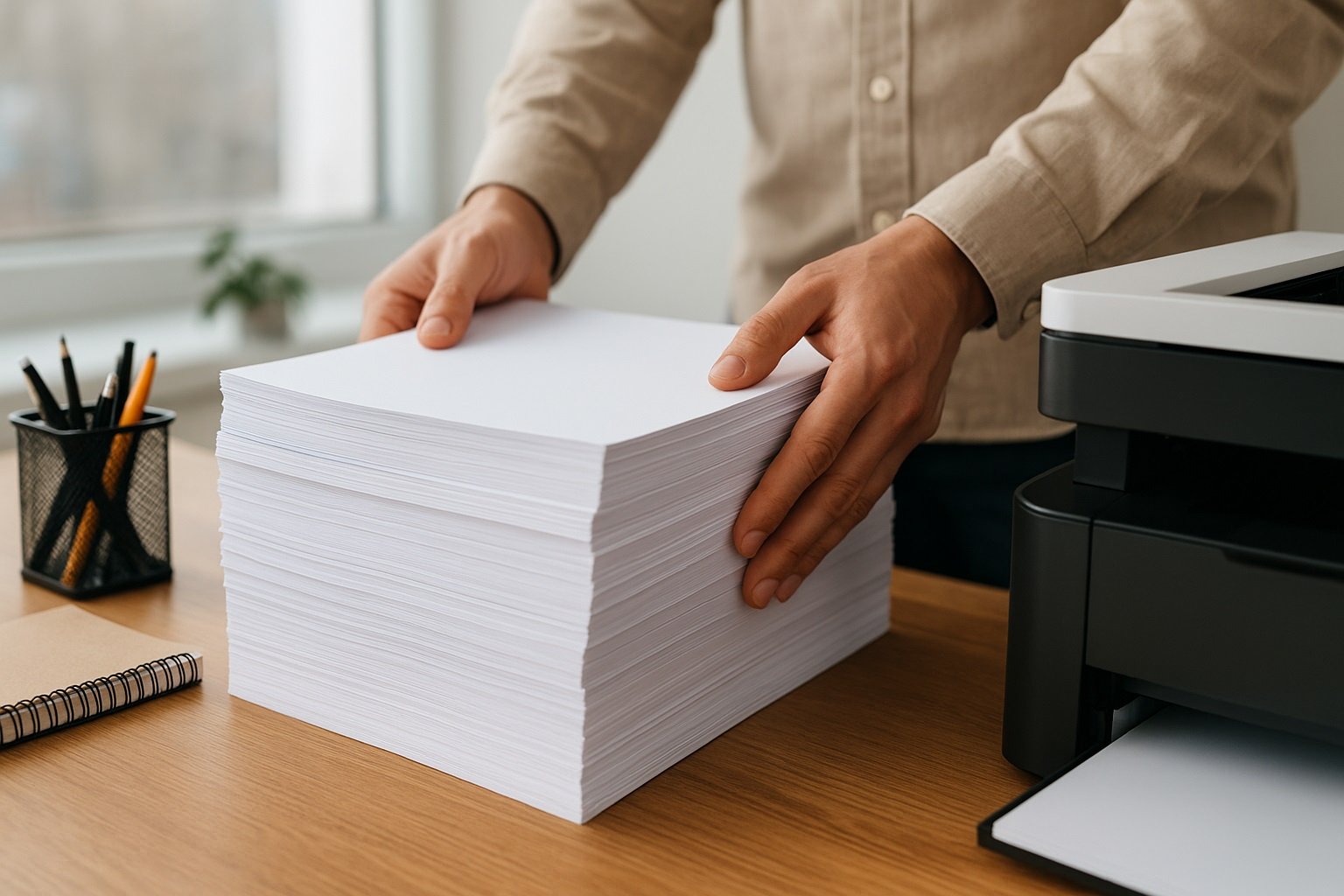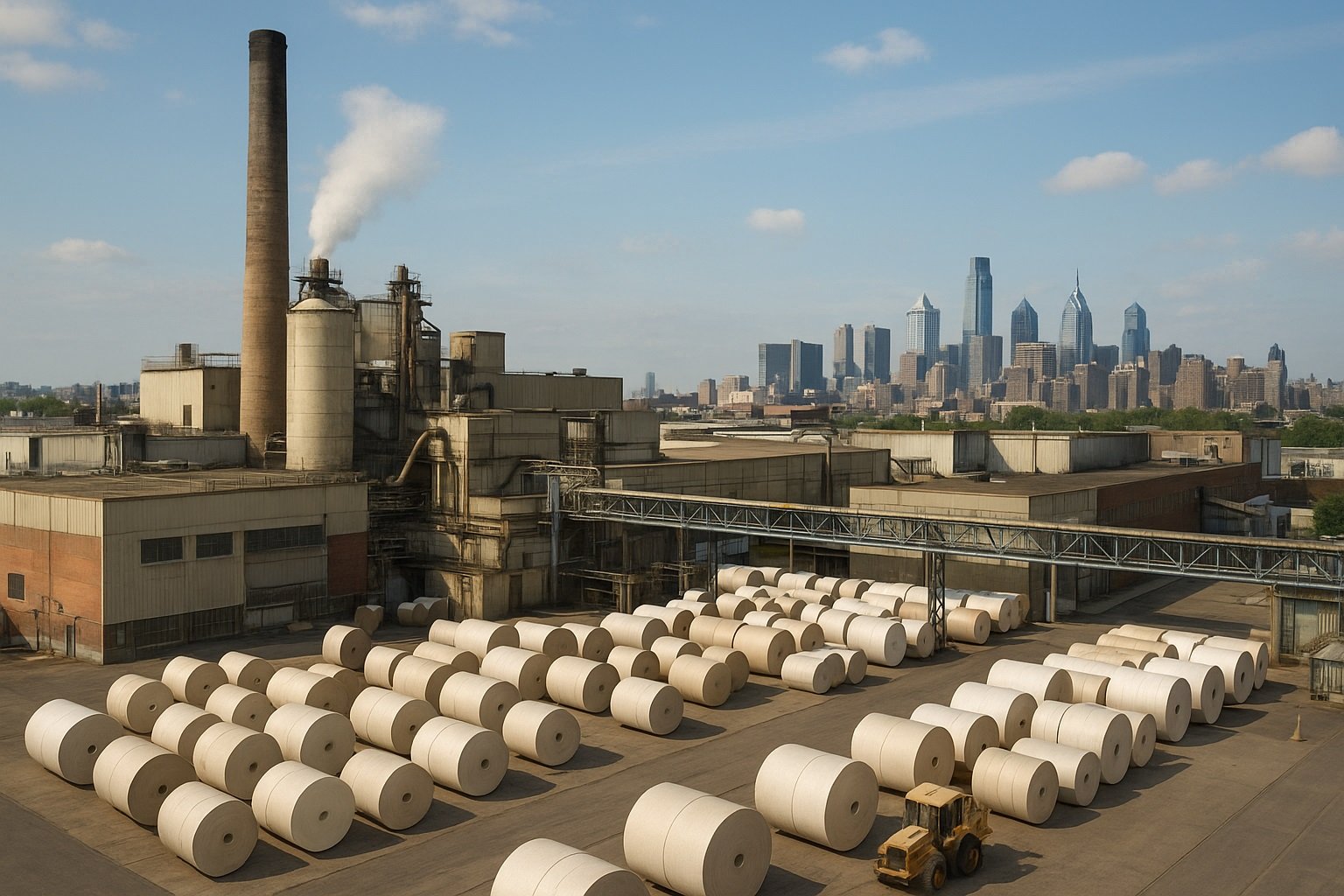Paper has progressed from a mere writing medium to a multifunctional material that influences packaging, sanitation, art, and sustainability.
Its application has evolved from prints and parcels to the domains of banking, marketing, industry, food, and much more.
In catering and restaurant supply, paper has secured its place as an indispensable essential. An item that is subtly woven into every aspect of the service.
However, to maintain its position, paper mills are constantly adapting to meet the modern demands. These needs revolve around the concepts of viability, innovation, and efficiency.
How to Describe a Paper Mill?
A paper mill is a dedicated industrial plant that produces paper on a large scale. Historically, paper production started 2000 years ago when ancient China created sheets of it from mulberry bark and rags.
Later, during the 19th century, England brought industrialization into this domain. They introduced water and steam-powered paper mills that gained popularity for their mass production and lower costs.
The automation has fundamentally shaped the publications, packaging, and sanitary products, as is evident today.
What does the Paper Mill Feed On?
The inputs or raw materials that are used in the manufacturing of paper include:
- Wood Pulp: They use a primary raw material that is a derivative of softwood or hardwood.
- Recycled Paper: For the eco-conscious market, paper mills have integrated the concept of repurposing post-consumer and post-industrial paper products.
- Plant Fibers: Commonly, they use bamboo, hemp, and straw to produce specialty papers.
- Additives: Some facilities enhance the appearance and feel of the finished product by incorporating chemicals such as sizing agents, fillers, and dyes in their procedures.
Each of the above-mentioned varieties of raw materials affects the quality, texture, and strength of the paper.
What Procedure is Followed?
Pulping
The very first step is to separate and convert the chosen raw material into a fibrous slurry or pulp. There are three methods to do so:
- The mechanical procedure physically grinds the wood chips.
- The chemical pulping process includes the use of chemicals to break down the plant cellulose.
- The recycled method rehydrates and de-inks the reclaimed paper to produce the pulp.
Bleaching
They refine and improve the mixture’s appearance through bleaching. The modern techniques utilize safer chemicals to lower the environmental impact.
Papermaking
They then soften the pulp with water and distribute it evenly on a moving mesh for sheet formulation. The presses wring out the excess water.
Next, they pass the flat pieces through heated cylinders for further removal of moisture.
Finishing
Now the dried paper is coated and cut into desired sizes and shapes. The specialized papers receive further treatments to enhance the gloss, texture, and water resistance.
What does Each Type of Mill Handle?
Newspaper Mill
This kind of mill produces low-cost and lightweight paper that newspapers generally use.
Printing and Writing Mill
These paper mills are invested in the manufacture of high-quality office and printing sheets.
Tissue Mill
Such plants make toilet paper, facial tissues, and paper towels.
Specialty Mill
They are inclined towards the generation of cardboard, packaging materials, and industrial-grade technical papers.
How are the Demands of Catering and Restaurant Supply Met?
The hospitality sector greatly depends on its catering and restaurant supply. These essentials are now preferred to be paper-based. Such paper supplies take up the hygiene, packaging, and convenience responsibilities.
Eco-Friendly Alternatives
From the plant fibers, the paper mills are producing compostable plates, cups, wrappers, and much more.
They aim to reduce the landfill waste since these catering and restaurant supplies can decompose naturally. An increasing amount of used scraps is repurposed into napkins, disposable towels, and packaging items.
Furthermore, the pulp is sourced from certified forests or recycled paper to reduce deforestation. The paper mills are mindfully adopting reclaimed water systems and renewable energy to lessen the ecological impact.
Also, the rejects are recycled into new items, and the leftover pulp waste is converted into biogas or fertilizers.
Purpose-Built Papers
Grease an Oil-Resistant Paper: Grease-proof coatings and plant-based liners are a common addition to takeout containers and sandwich wraps. This feature ensures the food remains fresh until it reaches the hands of the customer.
Moisture-Retaining Paper: Water-resistant linings prevent the supplies from getting soggy that hold liquid or moist foods.
Heat-Safe Paper: Many of the catering and restaurant supplies can resist high temperatures, making them the perfect fit for ready-made and microwavable meals.
Custom Designs and Branding: Many brands want to get their logos or identities stamped on the tableware. Paper mills provide edible and food-safe inks for this purpose. The plants also employ custom molds and cutting techniques to meet the tailored demands.
Hygiene and Safety Factors
- Food-safe antimicrobial laminations reduce bacterial growth.
- The paper mills ensure that all products fall under the food-grade standards set by the authorities.
Partner Up with a Service that Commits
We at American Eagle Paper Company Inc. believe that every business has needs that reflect its diversity. Hence, each customer who walks through our doors will find what they need as we cater to a broad customer network.






